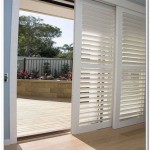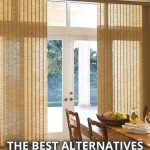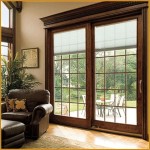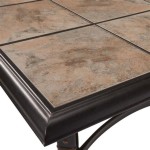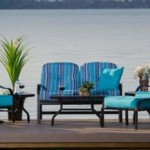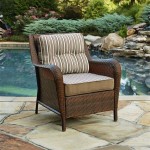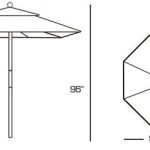Patio Glider Chairs: A Comprehensive Guide to Comfort and Relaxation
Patio glider chairs represent a popular choice for outdoor seating, offering a gentle, rhythmic motion that promotes relaxation and tranquility. Unlike traditional rocking chairs, gliders utilize a smooth, linear motion, providing a more stable and controlled experience. This guide will explore the various aspects of patio glider chairs, encompassing their design, materials, benefits, and considerations for selection and maintenance.
Understanding the Mechanics of Patio Glider Chairs
The fundamental mechanism of a patio glider chair involves a system of linkages and bearings that allow the seat to move smoothly back and forth along a straight or slightly curved path. This differs significantly from the arcing motion of a rocking chair. The gliding motion is achieved through a base frame that remains stationary while the chair's seating portion is connected to this base via a series of pivoting arms. These arms typically house sealed bearings that minimize friction and ensure a quiet and effortless glide. The design inherently offers greater stability than rocking chairs, as the base remains firmly planted on the ground, preventing tipping or excessive movement.
The quality of the bearings and the precision of the linkages are crucial factors determining the smoothness and longevity of the gliding action. Higher-quality gliders typically feature sealed ball bearings constructed from durable materials like stainless steel or hardened steel, which are resistant to corrosion and wear. The linkages themselves are often made from heavy-gauge steel or aluminum to provide strength and stability. The geometry of the linkages also plays a role in the feel of the glide. Some gliders offer a shorter, quicker motion, while others provide a longer, more leisurely glide. The preferred type of motion is largely a matter of personal preference.
Many modern patio gliders incorporate additional features to enhance comfort and functionality. These may include padded cushions, adjustable backrests, and even built-in side tables or cup holders. The integration of these features can significantly increase the overall user experience and make the glider a more versatile piece of outdoor furniture.
Exploring the Variety of Materials Used in Patio Glider Chairs
The selection of materials used in the construction of patio glider chairs significantly impacts their durability, aesthetic appeal, and resistance to the elements. Common materials include wood, metal, resin wicker, and various synthetic fabrics for cushioning.
Wood: Wood gliders offer a classic and timeless aesthetic, blending seamlessly with natural outdoor settings. Teak, cedar, and acacia are popular choices due to their inherent resistance to moisture, insects, and decay. However, even with these naturally durable woods, regular maintenance is essential to prevent warping, cracking, and fading. This typically involves periodic cleaning and the application of protective sealants or oils. Wooden gliders tend to be heavier than those constructed from other materials, providing added stability. The natural grain and texture of the wood add a touch of warmth and sophistication to any patio or deck.
Metal: Metal gliders, particularly those made from aluminum or steel, offer superior strength and durability. Aluminum is naturally rust-resistant, making it an excellent choice for humid or coastal environments. Steel, while strong, requires a protective coating, such as powder coating, to prevent rust. Metal gliders are often lighter than wooden gliders, making them easier to move and reposition. The sleek and modern aesthetic of metal gliders complements contemporary outdoor designs. Metal frames can be combined with various seating surfaces, such as woven straps or padded cushions.
Resin Wicker: Resin wicker, also known as all-weather wicker, is a synthetic material designed to mimic the look of natural wicker while offering enhanced durability and weather resistance. It is typically made from polyethylene (PE) or polyvinyl chloride (PVC), which are both resistant to moisture, UV rays, and mildew. Resin wicker gliders are lightweight, easy to clean, and require minimal maintenance. They are available in a wide range of colors and styles, offering versatility in terms of design. The woven texture of resin wicker adds a touch of casual elegance to outdoor spaces.
Cushion Fabrics: The fabrics used for cushions on patio glider chairs must be durable, weather-resistant, and comfortable. Common choices include solution-dyed acrylic, olefin, and polyester. Solution-dyed acrylic fabrics, such as Sunbrella, are known for their exceptional fade resistance and ability to withstand prolonged exposure to sunlight and moisture. Olefin fabrics are also fade-resistant and offer good stain resistance. Polyester fabrics are a more budget-friendly option but may not be as durable as acrylic or olefin. Regardless of the fabric choice, it is important to select cushions that are well-padded and provide adequate support for comfortable seating.
Key Considerations When Selecting a Patio Glider Chair
Choosing the right patio glider chair involves careful consideration of several factors, including size, style, comfort, durability, and budget. A thorough assessment of these factors will ensure that the selected glider chair meets specific needs and provides years of enjoyable use.
Size and Space: The available space on the patio or deck is a primary consideration. Measure the intended area to ensure that the glider chair will fit comfortably without overcrowding the space. Consider the swing radius of the glider, as it requires some room to move back and forth. Smaller gliders are ideal for compact spaces, while larger gliders provide more seating area and may be better suited for larger outdoor areas. Also, consider the height of the glider's backrest, ensuring it provides adequate support for the head and neck.
Style and Aesthetics: The style of the glider chair should complement the existing outdoor furniture and overall aesthetic of the patio or deck. Gliders are available in a wide range of styles, from traditional to contemporary. Wooden gliders often evoke a classic and rustic feel, while metal gliders offer a more modern and sleek look. Resin wicker gliders provide a versatile option that can blend with various styles. Consider the color and finish of the glider chair, ensuring it coordinates with the surrounding environment.
Comfort and Ergonomics: Comfort is paramount when selecting a patio glider chair. Look for gliders with well-padded cushions and supportive backrests. Consider the seat height and depth to ensure that it is comfortable for individuals of different heights. Some gliders offer adjustable backrests and lumbar support for added comfort. Test the gliding motion of the chair to ensure it is smooth and effortless. The goal is to find a glider that provides a comfortable and relaxing seating experience.
Durability and Weather Resistance: The durability and weather resistance of the glider chair are crucial factors, especially for outdoor use. Choose materials that are designed to withstand the elements, such as UV rays, moisture, and extreme temperatures. Look for gliders with rust-resistant frames and fade-resistant fabrics. Opt for gliders with sealed bearings to prevent corrosion and ensure smooth gliding over time. A well-constructed and durable glider chair will provide years of reliable use with minimal maintenance.
Budget: Patio glider chairs are available at a wide range of price points, depending on the materials, construction quality, and features. Determine a budget before starting the selection process to narrow down the options. While it may be tempting to opt for the cheapest option, it is important to consider the long-term value of the product. Investing in a higher-quality glider chair may be more cost-effective in the long run, as it will likely last longer and require less maintenance.
Maintaining Patio Glider Chairs for Longevity
Proper maintenance is essential for extending the lifespan of patio glider chairs and preserving their aesthetic appeal. Regular cleaning, protection from the elements, and periodic inspection of the moving parts are all important aspects of glider chair maintenance.
Regular Cleaning: Regular cleaning helps to remove dirt, dust, and debris that can accumulate on the surface of the glider chair. Use a mild soap and water solution to clean the frame and cushions. Avoid using harsh chemicals or abrasive cleaners, as they can damage the materials. For wooden gliders, use a wood cleaner specifically designed for outdoor furniture. For resin wicker gliders, a simple rinse with a garden hose may be sufficient. Promptly address any spills or stains to prevent them from setting in. Allow the glider chair to air dry completely before storing or using it.
Protection from the Elements: Prolonged exposure to the elements can damage patio glider chairs. During periods of heavy rain, snow, or extreme sunlight, it is advisable to cover the glider chair with a protective cover or store it in a sheltered location, such as a garage or shed. This will help to prevent fading, warping, and other forms of damage. When not in use, consider storing cushions indoors to protect them from moisture and UV rays. Regularly inspect the glider chair for any signs of damage, such as rust, cracks, or loose joints. Address any issues promptly to prevent them from worsening.
Lubrication and Inspection of Moving Parts: The gliding mechanism of patio glider chairs requires periodic lubrication to ensure smooth and quiet operation. Use a silicone-based lubricant to lubricate the bearings and linkages. Avoid using oil-based lubricants, as they can attract dirt and debris. Inspect the bearings and linkages regularly for any signs of wear or damage. Replace any worn or damaged parts promptly to prevent further damage to the glider chair. Tighten any loose bolts or screws to maintain the stability of the frame. By regularly inspecting and maintaining the moving parts, it is possible to ensure smooth and reliable gliding for years to come.

Outsunny 2 Person Patio Glider Bench Gliding Chair Loveseat With Armrest Black Diy At B Q

Garden Glider Chair Metal Frame Armchair Swing Rocking Outdoor Indoor

2 Seater Garden Swing Glider Lounge Chair Patio Rocking Armchair W Center Table

Costway Swing Glider Chair Outdoor Single Rocking Patio Garden Diy At B Q

Outsunny Metal Double Swing Chair Glider Rocking Seat Outdoor Khaki Aosom

2 Pieces Patio Glider Rocking Chair Set Costway

Outsunny Double Outdoor Glider Chair 2 Seater Patio Rocking Chairs Swing Bench With Tempered Glass Table Breathable Mesh Fabric For Backyard Garden Porch Brown Aosom

Outsunny 2 Seater Rocker Double Rocking Chair Lounger Outdoor Garden Furniture Diy At B Q

Xl Patio Outdoor Rocking Chair Porch Glider Lounger Home Garden Furniture

2 Person Patio Glider Chair With Cushions Costway
Related Posts

